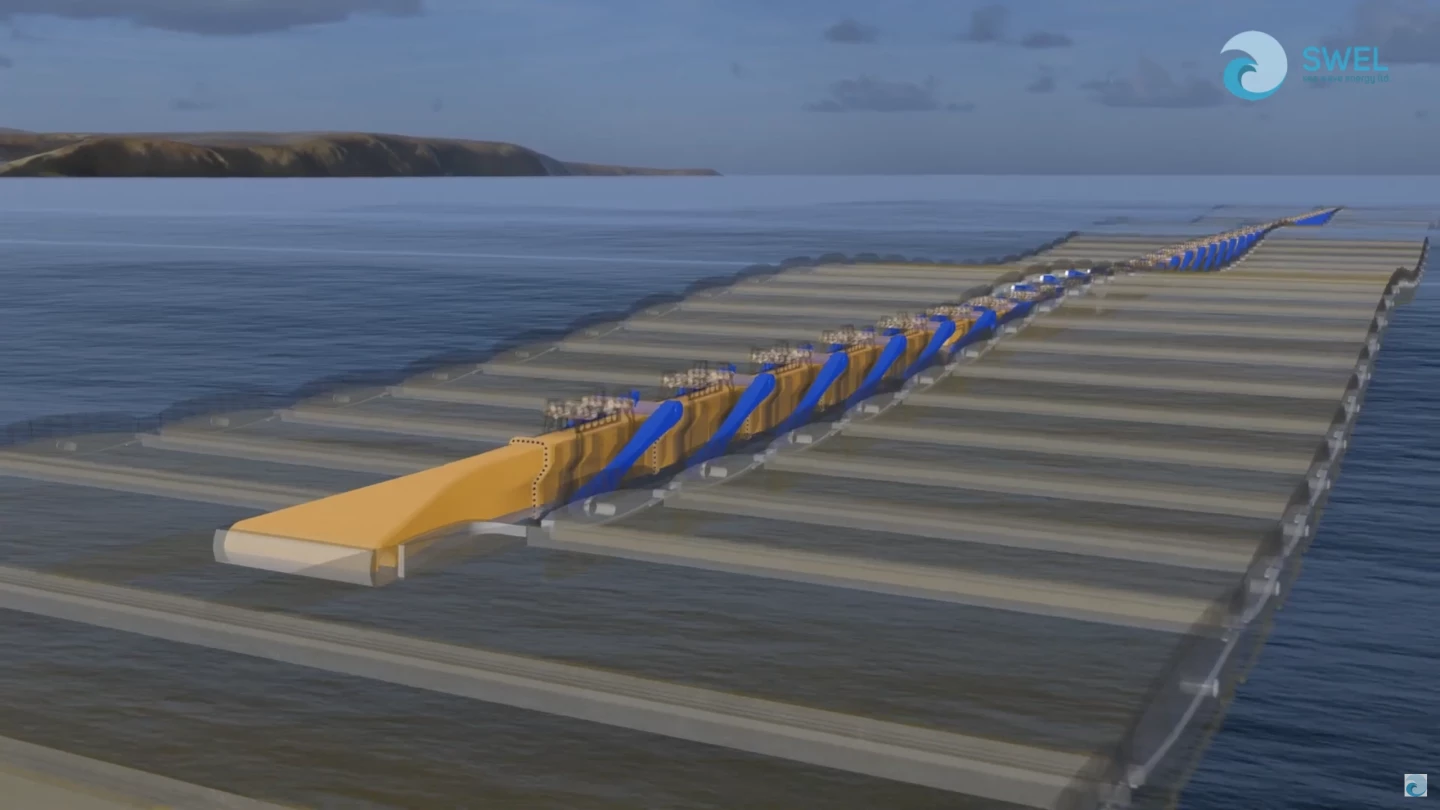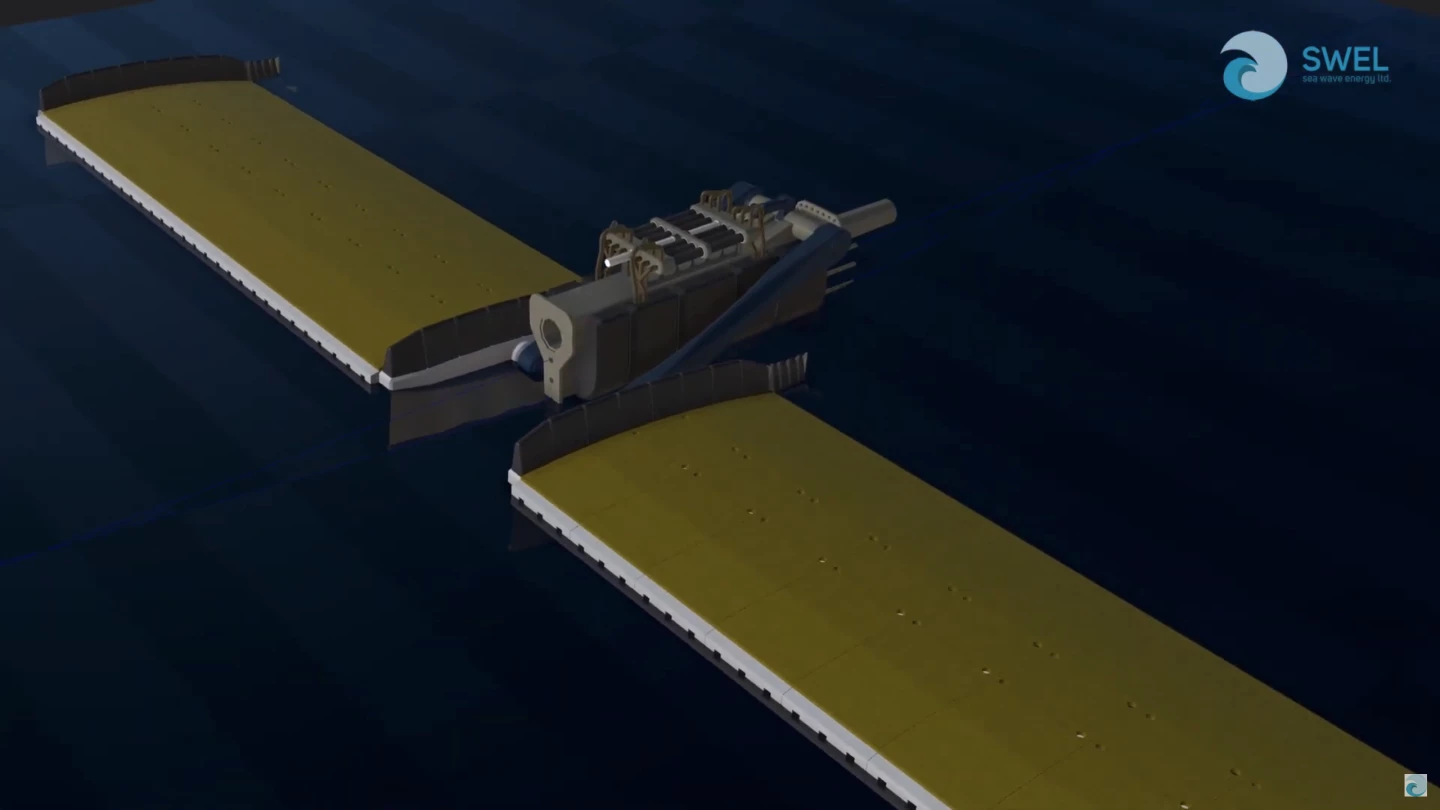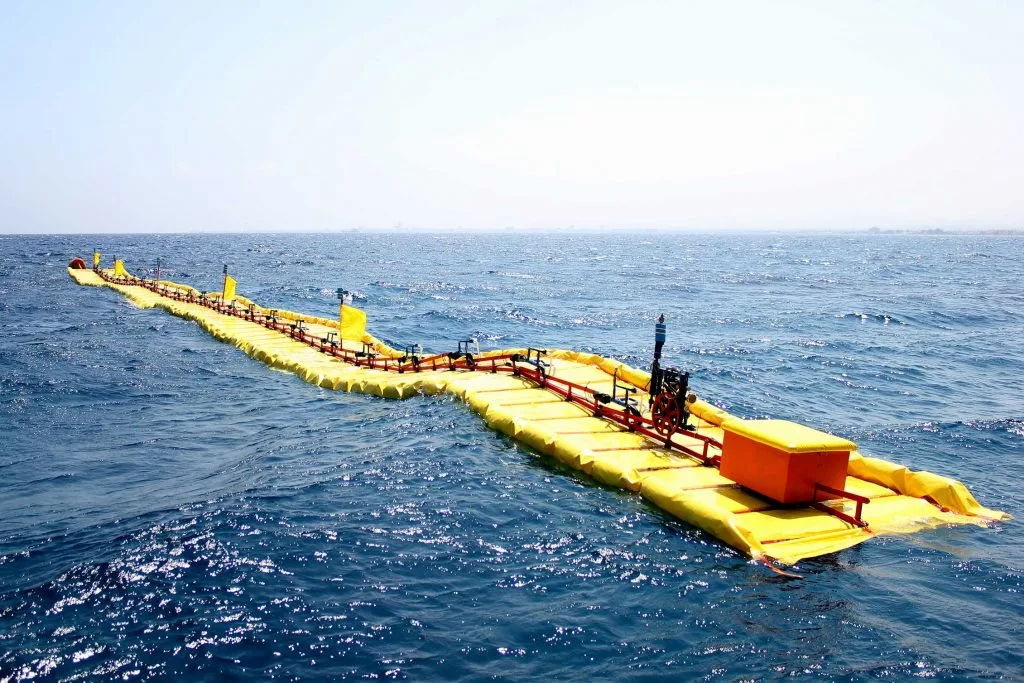Sea Wave Energy Ltd (SWEL) has been working for more than a decade on a floating wave energy device it calls the Waveline Magnet. With several prototypes tested on- and off-shore, the company claims it delivers "ultra low cost," with high output.
Solar electricity generation is proliferating globally and becoming a key pillar of the decarbonization era. Lunar energy is taking a lot longer; tidal and wave energy is tantalizingly easy to see; step into the surf in high wave conditions and it's obvious there's an enormous amount of power in the ocean, just waiting to be tapped. But it's also an incredibly harsh and punishing environment, and we're yet to see tidal or wave energy harnessed on a mass scale.
That doesn't mean people aren't trying – we've seen many tidal energy ideas and projects over the years, and just as many dedicated to pulling in wave energy for use on land. There are a lot of prototypes and small-scale commercial installations either running or under construction, and the sector remains optimistic that it'll make a significant clean energy contribution in years to come.

We hadn't run across SWEL before, but this company, operating between the UK and Cyprus, has been developing, prototyping and testing its Waveline Magnet devices for a long time now. In the simplest terms, you can conceive them as long, modular chains of plastic floats designed to sit on top of the water, lined up pointing directly into the waves.
As waves come through, the floats follow the contours of the water, creating a serpentine motion in these chains of floats. Rather than connecting directly to one another, the floats are attached to rigid, non-buoyant spine pieces via lever arms. The floats move with the waves, the spine stays relatively still, and the lever arms drive electrical generators inside the spine units on both their upward and downward motions.
As a wave first hits the Waveline Magnet, the system gets a read on the size and speed of the wave, allowing it to fine-tune the power extraction at each generator as the wave moves down the line. SWEL says this machine can work in "all wave heights," and that "harsh wave conditions do not negatively affect the device's performance, but in contrast enhance it, without survivability complications."

In contrast to concrete-based devices like WSE's blowhole energy generator, it can be built entirely from recycled materials, and its impact on marine life and the sea floor should be minimal. The continuous power it generates can be sent back to shore via cable, or used directly by offshore power consumers, or used to generate and store hydrogen that can be sent back to shore.
SWEL has built several generations of prototype over the last 10-plus years. These have been tested in wave tanks at the University of Plymouth, The University of Cyprus, the LIR National Ocean Test Facility, Centrale Nantes and University College, Cork. Others have been deployed in the open ocean.
SWEL claims "one single Waveline Magnet will be rated at over 100 MW in energetic environments," and the inventor and CEO, Adam Zakheos, is quoted in a press release as saying "... we can show how a commercial sized device using our technology will achieve a Levelized Cost of Energy (LCoE) less than 1c€(US$0.01)/kWhr, crushing today’s wave energy industry reference value of 85c€ (US$0.84)/kWh …"
LCoE, of course, is a total lifetime analysis of an energy source, accounting for all upfront capital and ongoing operational expenses across the lifespan of the project. An LCoE of one cent per kWh (US$10/MWh) would be absolutely revolutionary; that would mean these things produce power at less than half the cost of solar and wind. Heck, it'd beat the pants off gas, coal, nuclear, geothermal or pretty much any known energy production system if that LCoE is accurate, according to Lazard's figures.

And these kinds of promises are where these yellow sea monsters start smelling a tad fishy to us. Despite many years of wave tank testing, SWEL says it's still putting the results together, with "performance & scale-up projections, numerical and techno-financial modeling, feasibility studies and technology performance level" information yet to be released.
But the one set of test figures we can find, from wave tank testing at Centrale Nantes, are ... well, fairly modest. A 32-meter-long (105-ft) prototype, weighing "approximately 1.8 tonnes" achieved a peak power output of 1.4 kW across the duration of these tests. Yes, peak. Which does prompt the question: just how long, and how heavy, will the promised hundred-megawatt version be, in order to generate peaks some 71,429 times as high as this prototype managed – albeit in relatively small waves?
If we're talking about colossal multi-mile long devices, do they become a shipping hazard? Can they really be manufactured and deployed in a matter of "weeks rather than months?" And heck, is this thing going to be that much better and cheaper than, say, something like Albatern's WaveNet system, which proposes a system of interlinked "squid" generators capable of harnessing wave energy from all directions?
That system also promised to scale up beyond 100 MW, but its projected LCoE, according to independent experts, only made it down to US$0.17 per kWh once deployed in a large, 55-MW array. Indeed, in the eight years since we featured WaveNet, Albatern appears to have vanished, and the company's website now displays nothing but a sad Ubuntu default page.

Peeking down the WaveNet rabbit hole puts this Waveline Magnet innovation in context: SWEL has made some pretty outrageous LCoE claims here, and we'll need to see some very convincing independent analysis to back them up. The company says the upcoming reports will set the stage for commercialization, so I guess we might see.
If SWEL delivers on its promises, well, you're looking at nothing short of a clean energy revolution – one it's increasingly obvious that the planet desperately needs, even if it comes in the form of yet more plastic floating in the ocean. But with investors lining up to throw money at green energy moonshots, the space has no shortage of bad-faith operators, wishful thinking and inflated expectations. And if SWEL's many tests had generated the kinds of results that extrapolate to some of the world's cheapest and cleanest energy, well, we'd expect to see a little more progress, some Gates-level investment flowing in, and more than an apparent sub-10 head count driving this thing along.
So we'll remain skeptical, hoping against hope that this is the one that surprises us, and inviting SWEL to make us eat our words as soon, and as hard as possible. Nothing would make us happier. Check out a video below.








